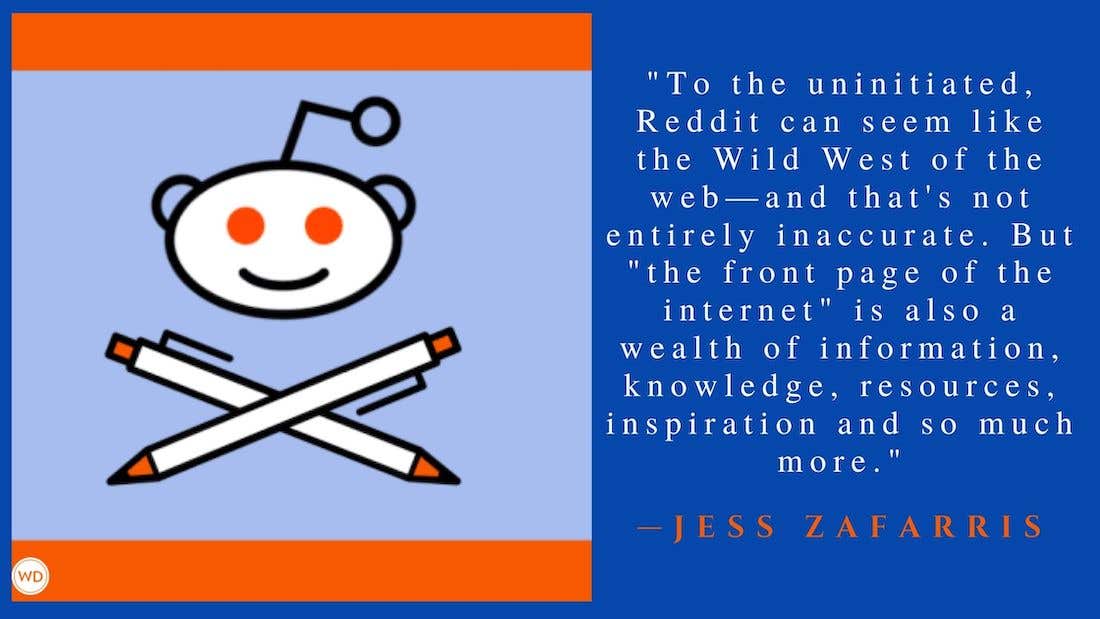Dual Success
More and more print publications are producing web counterparts. How does that affect nonfiction writers? David A. Fryxell, Writer’s Digest Editorial Director, provides some insight.
Electrons are cheap; paper is pricey. That's the first thing you need to keep in mind if you want to use the explosion of print-publication-related Web sites to break into new markets for your writing.
That's old-fashioned print-on-paper markets we're talking about here, which may seem an anomaly in a magazine devoted to plugging you in to the latest and greatest in writing for the wired world. But one of the most often-overlooked trends in the gold rush to the World Wide Web is that many of the most prominent and successful Web sites have sprung from magazines and newspapers. And even as print periodicals have spun off Web sites, they've continued to publish words on paper.
The smart ones take advantage of the strengths of both the new medium and the old. If you can endear yourself to their editors by being equally smart, by pitching print-plus-online packages that meet their expanded needs in the digital age, you'll find your queries getting snapped up faster than the latest dot-com IPO.
Dual Opportunity
Think of your favorite Web sites: The New York Times (www.nytimes.com) perhaps, the guilty pleasure of People Magazine (www.people.com), your hometown daily newspaper, Writer's Digest of course (www.writersdigest.com). Aside from search engines, shopping sites and reference sites, many of the most content-rich Web sites have print counterparts. In fact, despite predictions that the Web would usher in a golden age of new-media magazines ("Web zines"), there are really just a handful of national commercial, mass-audience, Web-only sites publishing much original content that you and I would call "articles": Slate (www.slate.com), Salon (www.salon.com), Feed (www.feedmag.com)—and the list fizzles out pretty quickly after that.
By contrast, more than 8,000 print-based newspapers and magazines worldwide have companion Web sites, according to News-Directory.com (www.newsdirectory.com). And that's just English-language publications. That number includes 4,817 magazines and 911 non-daily US newspapers (more likely to be open to freelancers than dailies, which tend to rely on staff writers and inhouse Web staff).
While many publications are simply "repurposing" print content on their Web sites, more and more are augmenting their online presences with original material and material that complements and supplements the print edition.
A newspaper, for example, might print a story summarizing a report on the quality of local schools, then make the details of the report available on its Web site—so you could check the "report card" on your neighborhood school. Given the price of newsprint, the cost of running all those details on paper would be prohibitive; electrons, however, are cheap. Besides, giving everybody in town the details about all schools—when most readers want in-depth data about only one or two—would be wasteful. (And what about readers who don't have any kids in school at all?) The Web can do a much better job of targeting information to a narrow audience, because the audience can select what it wants and doesn't want. (Imagine if the paperboy had to go from door to door, asking each household what pages in the newspaper they wanted delivered.)
So the second thing to remember about the Web versus print is that the Web excels at breadth and depth; print demands a careful balance of breadth with just enough depth. The Web allows you to list all the options readers might want—breadth—and then, once readers find a topic they want to learn more about, lets them summon up more facts about that topic than casual, non-targeted readers would ever want. In other words, depth. The Web is a shotgun (list all the restaurants in town for me!) as well as a rifle (tell me everything about Bob's Palace of Chicken!).
Indeed, Web users have so quickly become spoiled by the endless resources online that they expect breadth and depth, especially breadth. If your online city guide lists 1,000 restaurants and somehow misses their favorite neighborhood greasy spoon, you'll hear about it. Nobody expects a print city magazine to match the yellow pages in its coverage, but the Web raises expectations to new heights of point-and-click instant gratification.
What Will You Give the Web?
What does this mean to you as a writer? Suddenly, you need to start thinking of the collecting and culling of your material as a two-part process: what makes it into your print article (only the most carefully selected facts and examples, targeted like cruise missiles to make your point) and what you might offer as ancillary material for a publication's Web site (not quite everything else in your notebook, but you get the idea).
You might think of these Web off-shoots as a bottomless pit of sidebars. While in pre-wired days you might have offered an editor a short sidebar of helpful places readers could call or write for more information on your subject, now you can add whole pages of resources that would otherwise blow your word count sky-high. Your print profile of a film director might include a short box of quotes from him on actors and actresses he's worked with; online, you can share everything interesting he said about everybody he ever put on screen, plus a complete filmography with his comments on each movie he's made.
The idea isn't to offer editors the dregs of your notebook. But if in the course of researching you gather material that might be of interest to readers who want to pursue your subject in more depth, pitch it for the Web. Or if your notebook fills up with data that's unusable as such in print because of its breadth and narrow interest—like the newspaper's report card on neighborhood schools—suggest an online annex to your article.
Five magazine editors respond.
When to Pitch the Web
Rather than after-the-fact, of course, this Web-centric thinking can best be applied when you're conceiving the article idea—to sweeten your query. Think of the editor, desperate to jazz up his Web site but lacking the resources for original content, who gets a query like this:
In addition to the 2,500-word article for your magazine, I could provide a listing of 100 centers that offer the innovative programs I'll describe. With addresses, phone numbers, e-mail addresses and Web site URLs, this listing would make a perfect companion piece for your Web site.
Sounds like a lot of work for the writer, though, doesn't it? Creating Web "extras" might be a huge chore (for not much more money, if any), except that most of them involve more typing than really writing. You've already gathered these lists, found the filmography, copied down the phone numbers, noted the books for recommended reading. If typing up previously printed lists of facts proves too much of a chore, invest in a simple scanner with text-recognition software, available for about $200.)
The Web, in fact, resists weaving facts into text—the medium prefers its data raw, unadorned. Even when you do offer sentences rather than lists for the Web, thee iron rule is to keep it short. (On screen, 200 words looks like a formidable reading challenge; in print, 200 words is just clearing your throat.)
If that doesn't sound exactly like the kind of writing you dream of, remember the big picture with which we began: Thousands of Web sites are spin-offs of print periodicals. Use your Web savvy, think like a stressed-out editor who's been told to get the "new-media" religion, and ride the World Wide Web bandwagon—right into print.
David A. Fryxell, former editor in chief of Writer's Digest magazine, is the publisher of Desert Exposure, a monthly tabloid serving southwestern New Mexico.









